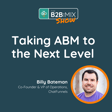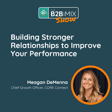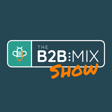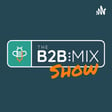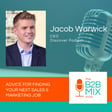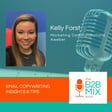
Infographic Marketing Tips & Tricks
Interested in infographic marketing but you're just not a graphic designer? No problem when you use a platform like Visme! This week on the show, we chat with Payman Taei, founder of Visme, about infographic marketing tips and tricks. Payman also shares how a solution like Visme can help non-designers take their visual content game to the next level.
Want to connect with Payman online? Connect with him on LinkedIn. Also, be sure to check out these terrific resources from Visme.
- Marketing Strategies We Used to Bootstrap Visme to over 4 Million users
- Unleashed LP: https://www.visme.co/visme-unleashed/
- Promo video of Unleashed: https://www.youtube.com/watch?v=N_ZsGsRKhHE&feature=youtu.be
- YouTube Channel -- video content with the focus of helping people become better communicators
By the way, be sure to check out Visme and its social channels on February 24th, to learn more about the launch of Visme Unleashed! Stacy had the chance to use the Visme Unleashed platform before it launched, and she says it's awesome.
A note to listeners: while Stacy did get early access to Visme Unleashed, Visme did not ask for any promotion on this podcast in return. We just think it's a cool solution that our listeners should know about.
About The B2B Mix Show:
The B2B Mix Show with Alanna Jackson and Stacy Jackson is brought to you by Jackson Marketing. Need help with your B2B online presence? Let’s talk!
Connect with us on social media:
The B2B Mix Show — Twitter, Instagram, LinkedIn, Facebook
